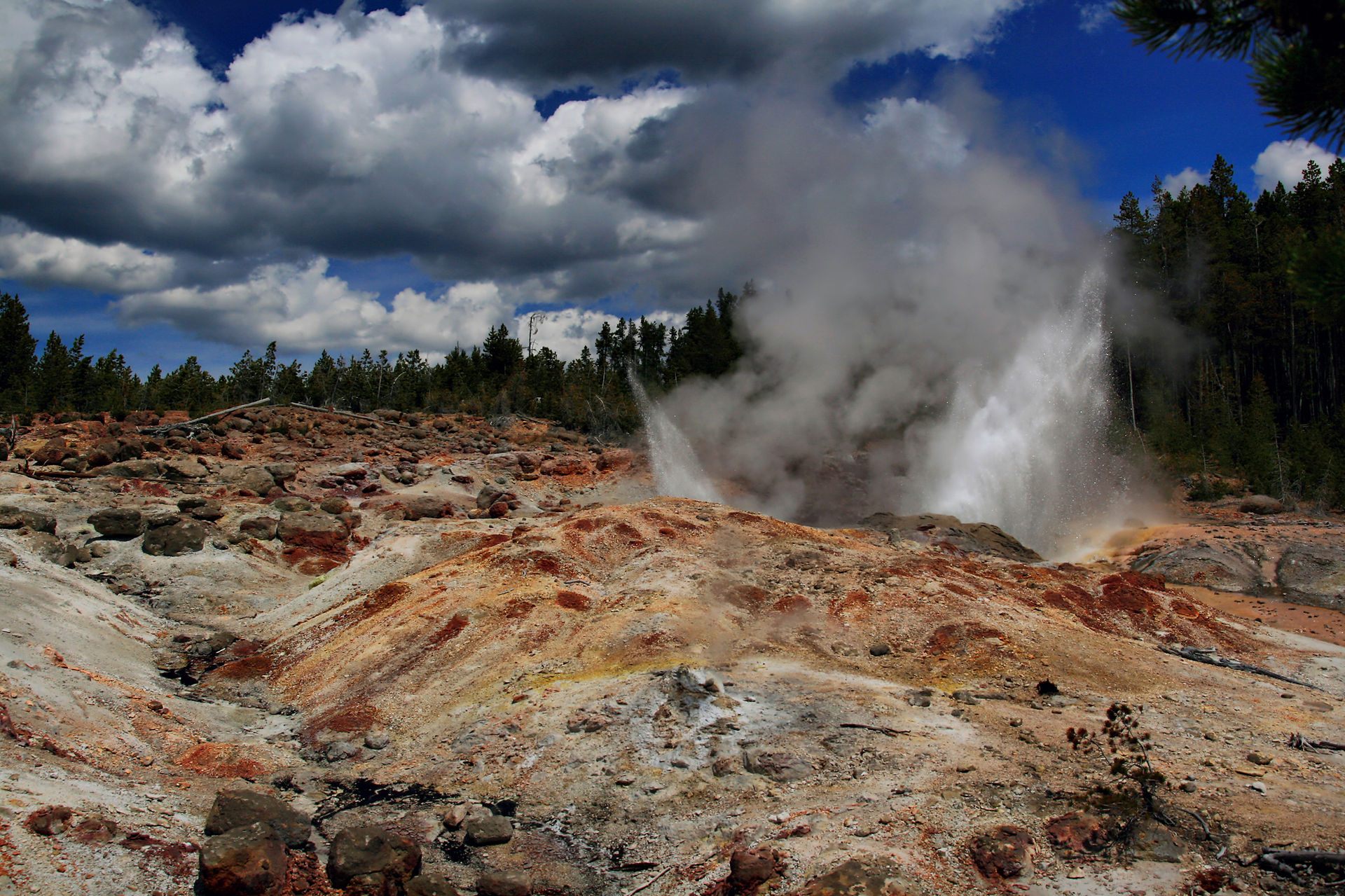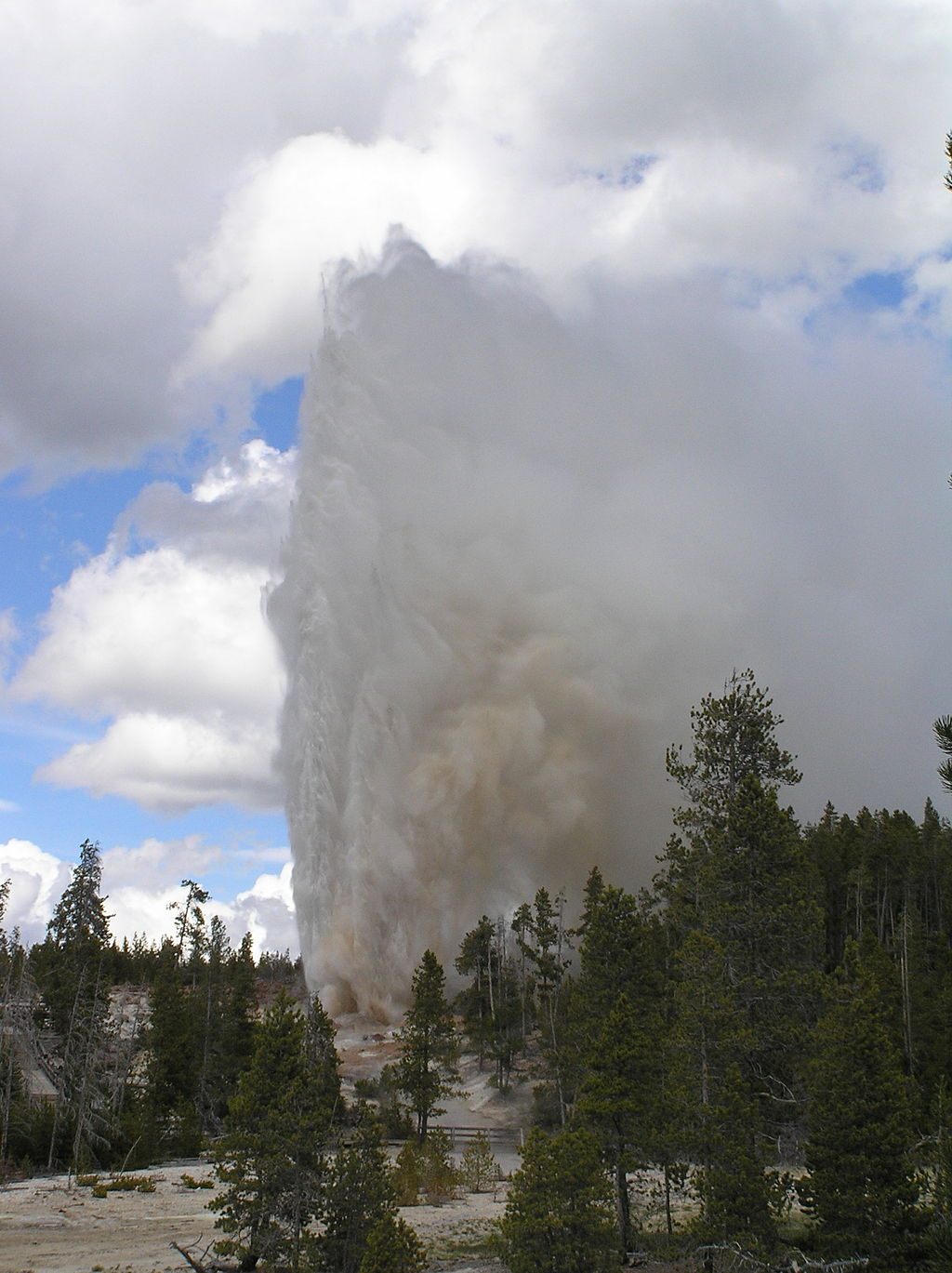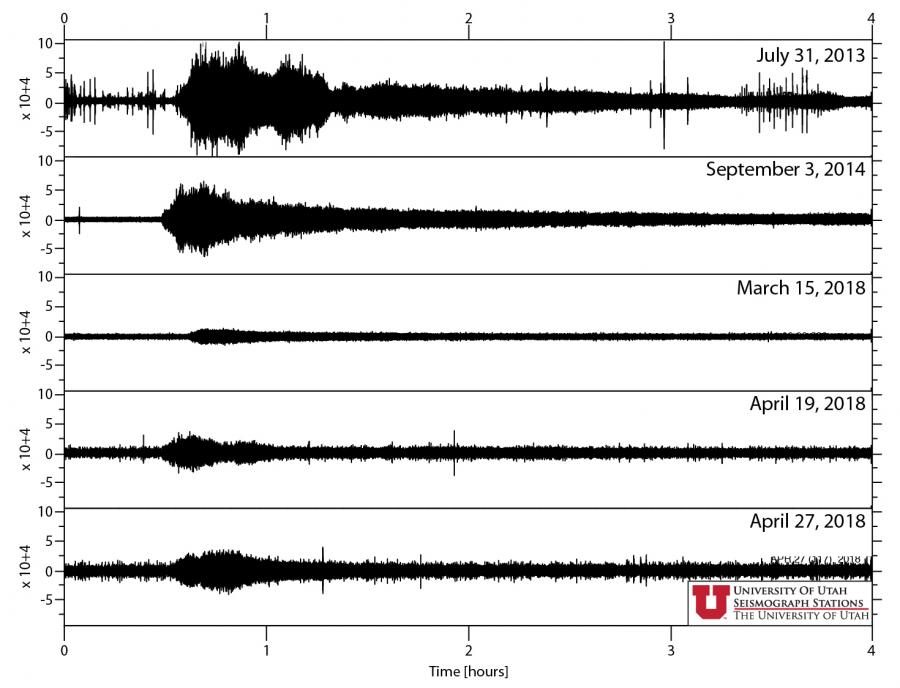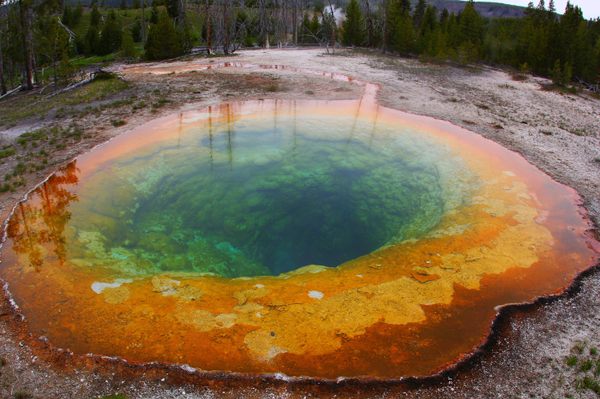The World’s Tallest Active Geyser Keeps Erupting
Steamboat, normally quiet for months at a stretch, has already blown its top three times this spring.

Steamboat Geyser is impressive. When it really gets going, it can spew water 300 feet in the air. That’s far higher than anything its neighbors in Yellowstone National Park’s Norris Basin can accomplish. In fact, Steamboat is considered the tallest active geyser in the world.
It’s also pretty sleepy. According to the geyser monitoring site GeyserTimes, while more active geysers may roar to life weekly or daily, Steamboat generally saves up its strength for very occasional blasts. In the past, it has slumbered for whole months, or even years, at a time. Once, it almost missed an entire decade: Between August 26, 1968 and March 28, 1978, it made not a peep.
So it was surprising when this past spring—after a three-and-a-half-year period of silence—Steamboat erupted three times in quick succession. In a recent blog post on the Yellowstone Volcano Observatory website, USGS scientists detailed the latest outbursts. The first happened on March 15, around 5:30 a.m. No humans caught the action, “but the activity was detected by a nearby seismometer, temperature gauges, and water discharge at a USGS stream gage,” they write. Plus, “the ground around the geyser was strewn with small rocks and mud.”

A little over a month later, on April 19, Steamboat blew another gasket. Instruments showed that this eruption was a bit bigger (although, again, no one saw it). The next came just eight days later, on April 27. This time, one lucky visitor clapped eyes on the torrent of water and steam. It was, once again, larger than the last, although still only about half as big as Steamboat’s biggest blasts.
When people read “unusual,” “eruption,” and “Yellowstone,” they often think of the 44-mile supervolcano hanging out under the park. But officials say there’s no need to worry: Steamboat is its own guy(ser). “There is nothing to indicate that any sort of volcanic eruption is imminent,” Michael Poland of the Yellowstone Volcano Observatory told the Washington Post.

Indeed, scientists aren’t quite sure what it all means. It’s difficult to figure geysers out, as studying them requires dealing with scalding hot conditions deep underground. Poland told the Washington Post that the rapid eruptions might have to do with thermal disturbances in the ground around the Norris Basin.
“It is also possible that Steamboat is entering a period of more frequent, but relatively small, eruptions,” the scientists write in the blog post. (This has happened before: If you scroll back through GeyserTimes, you’ll see that the early 1980s were particularly dramatic, with Steamboat explosions every couple of weeks or so.)
Another explanation: “The current eruptions may simply reflect the randomness of geysers,” they write. If you can throw that much water up in the air, no one can tell you what to do.


















Follow us on Twitter to get the latest on the world's hidden wonders.
Like us on Facebook to get the latest on the world's hidden wonders.
Follow us on Twitter Like us on Facebook